The richness of life in prairies can be astounding, even at a small scale. As a prairie ecologist, I see that every day as I wander through them with my camera or clipboard, but it can be hard to portray that to a skeptical public.
Photography has been a crucial tool in my crusade, giving me the opportunity to introduce people to the plants and animals that inhabit what so many people consider “boring grassy areas”.
In 2018, I undertook a new project to celebrate the diversity and beauty of prairies. It was a way of doubling down on my frequent assertions that you can find an astounding number of species in prairies if you just take the time to look for them.
To prove the point, I went to a small restored prairie near my Nebraska house and then chose a much smaller portion of it – a 1×1 meter square – and pledged to photograph everything I could within that diminutive fragment over the course of a year.
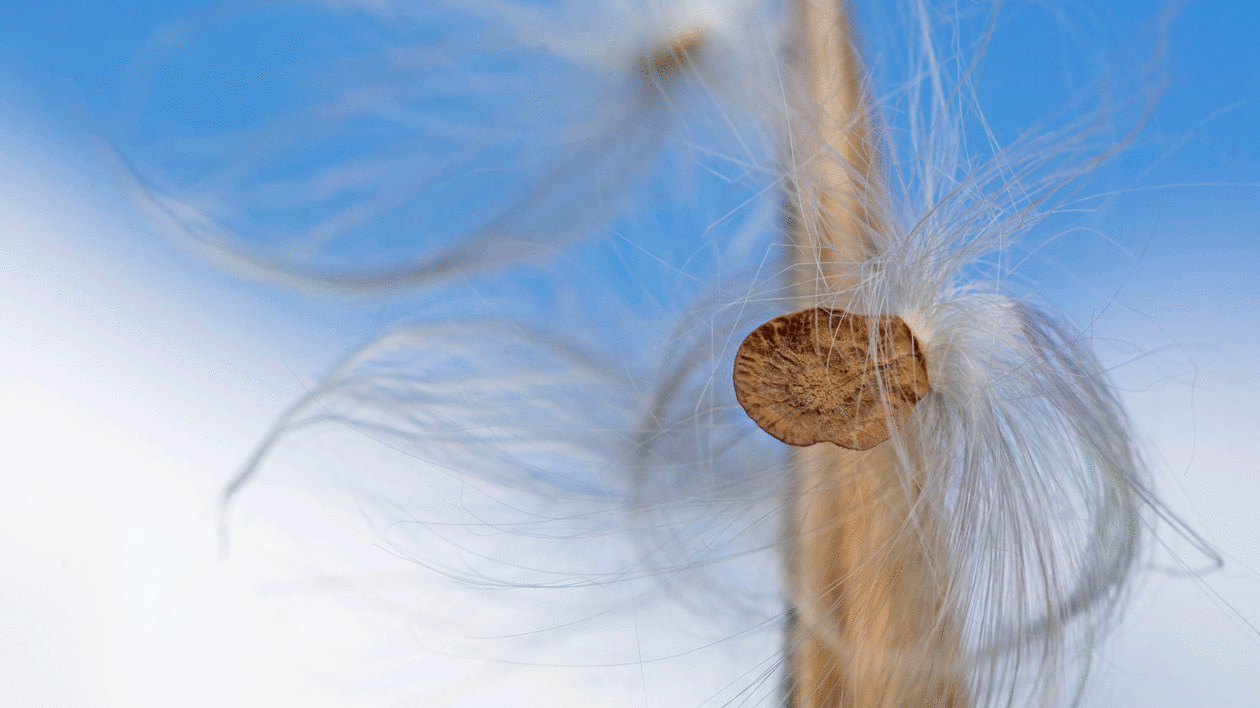
I began in late January, 2018. As of today, I’ve photographed 113 different species of plants and animals inside that little patch – not counting others that flew, scurried, or hopped away before I could snap their picture. I’ve made nearly 50 trips across town to my plot and have yet to come away disappointed. During the field season, nearly every visit yielded at least one new species.
Clearly, most of the species I photographed within my plot didn’t spend their entire lives within that tiny area.
The diversity I found was dependent upon the surrounding prairie, though even that larger prairie is only a few acres in size and fragmented by several patches of trees. The prairie is also fairly new – planted by Prairie Plains Resource Institute in the early 1980’s.
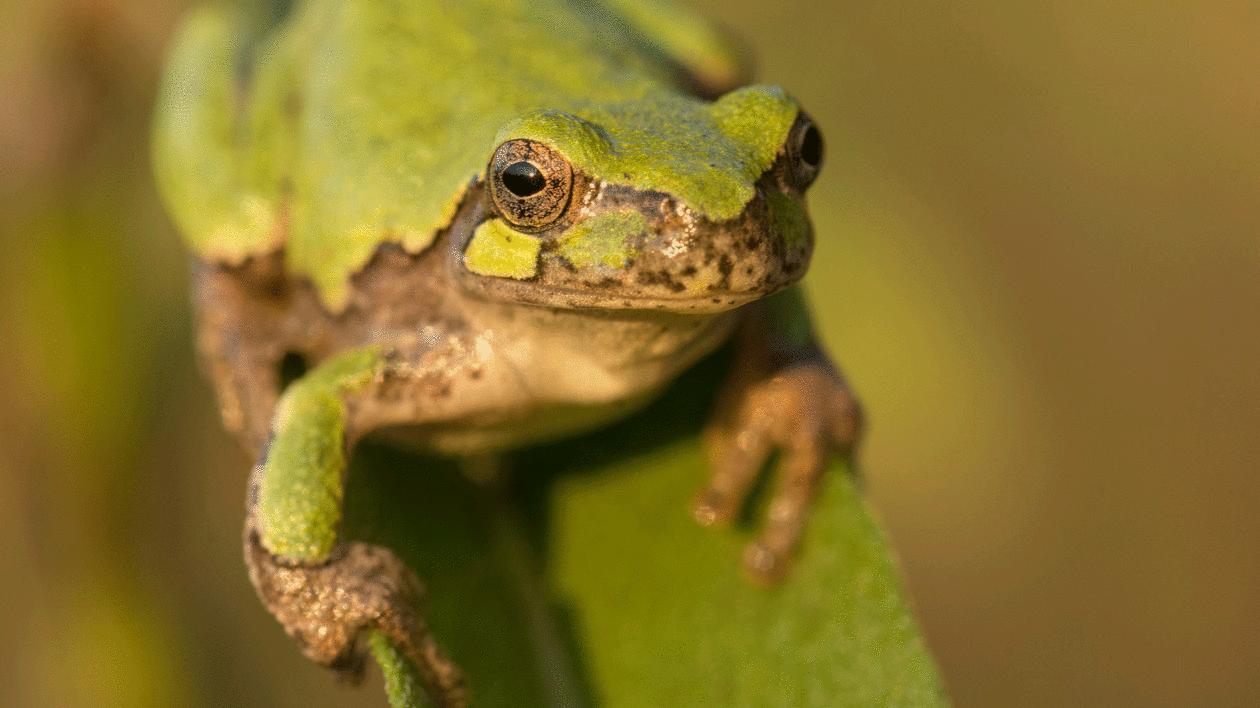
Many people might be surprised to find 113 plant and animal species within a small unassuming prairie nestled between a suburban neighborhood and a corn field, let along within a single square meter of it. That is pretty much the crux of the project.
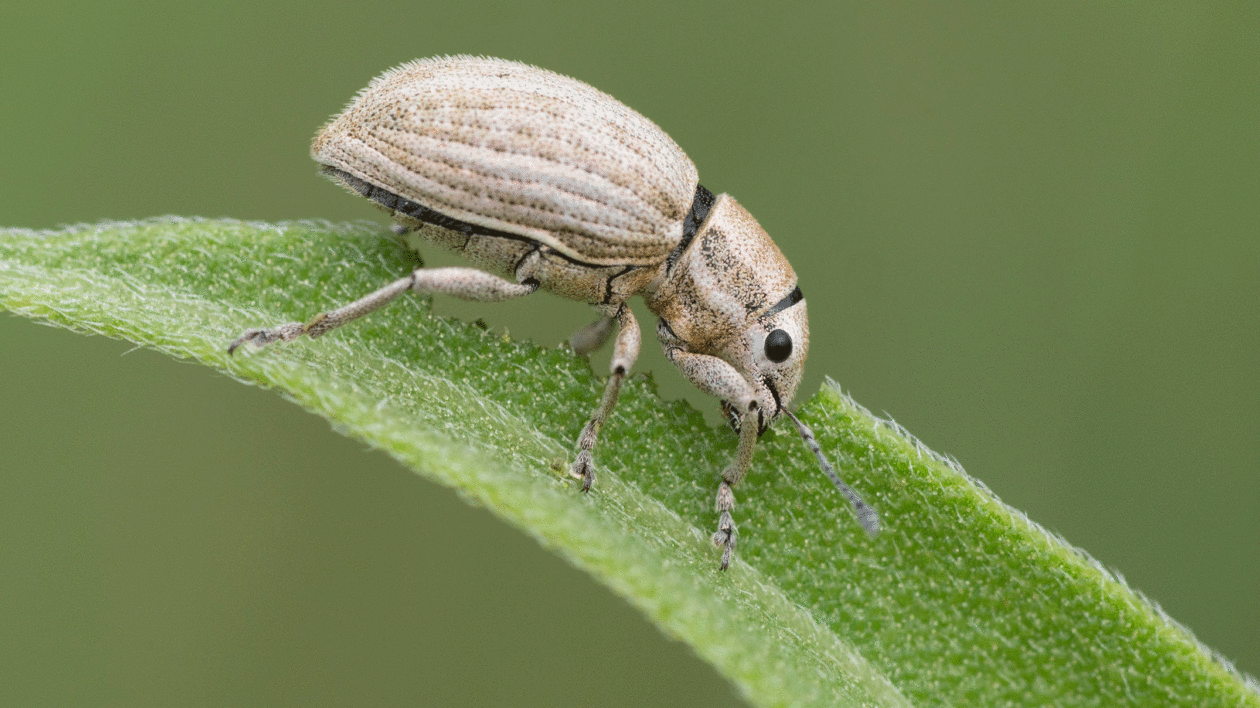
Among the eighteen beetle species is bright red one that, like monarch caterpillars, feeds exclusively on milkweed plants. Another decapitates sunflowers so it can lay eggs inside the exposed stem.
The seven spider species I found within the plot represent a range of hunting strategies, including some that catch food in webs, but also some that stalk and/or ambush their prey.
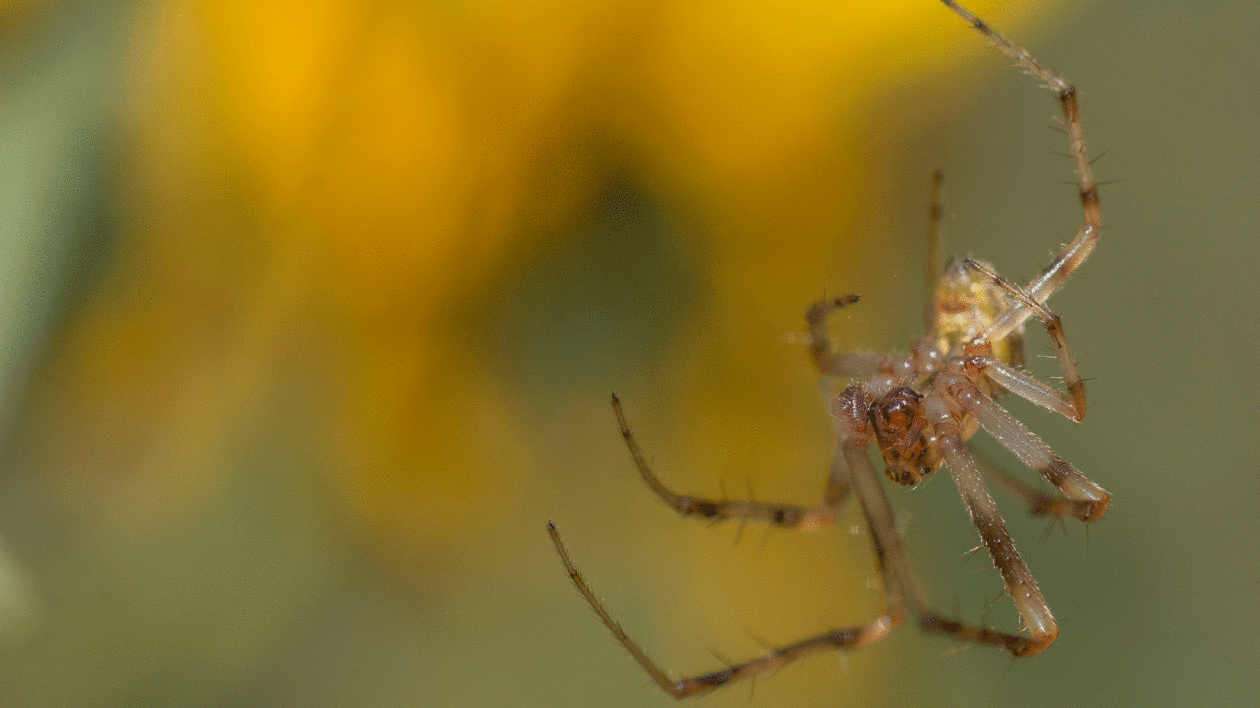
I was thrilled to photograph two different monarch butterflies inside the plot, the more so because of their current population declines.
However, I was equally excited by the sunflower stem that looked like a miniscule woodpecker had drilled a hole into it – clear evidence of a stem borer moth caterpillar at work.
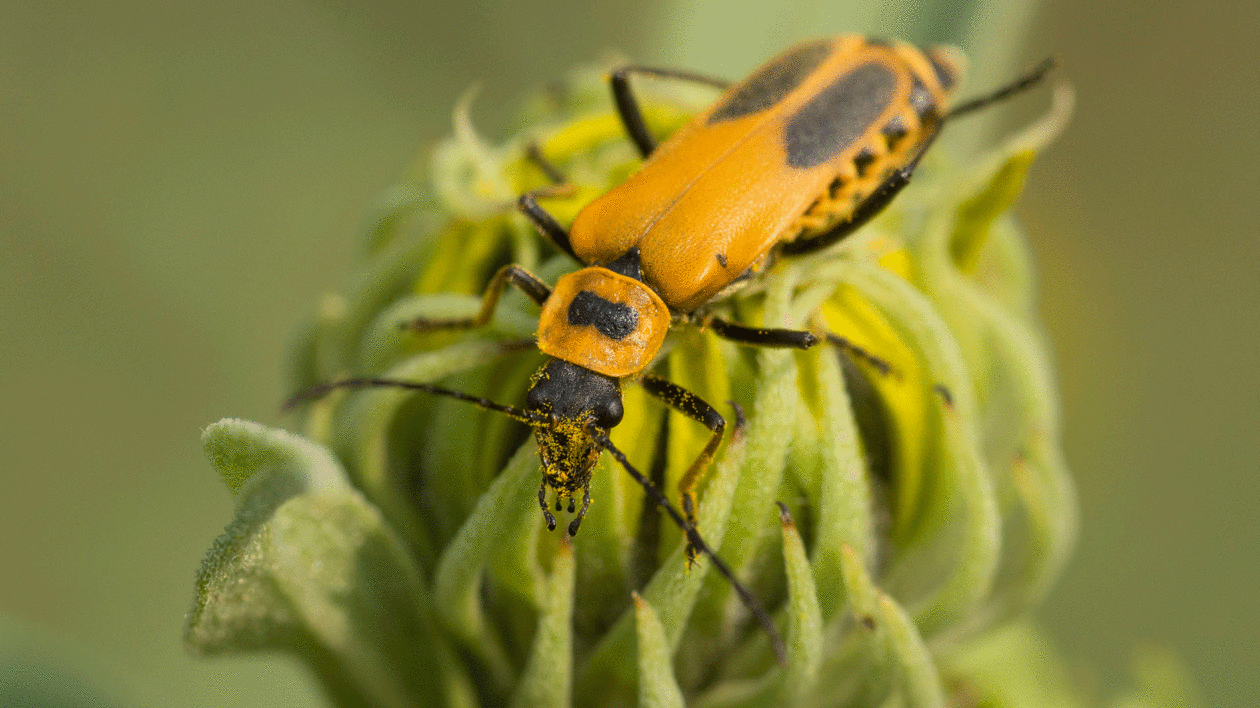
The most diverse group of insects found in my square meter was the flies. There were twenty one different kinds of flies, including some that resemble the familiar house fly, but others that few people would recognize as flies.
For example, a bee-mimicking hover fly was a common visitor throughout much of the season. I also photographed a crane fly that looks like a massive mosquito and a gall midge with an ovipositor (tubular egg-laying organ) as long as its body.
My favorite of the flies, though, was Delphinia picta, a gorgeous picture-winged fly that looks like it’s wearing a gas mask, feeds on rotting vegetation, and blows bubbles as part of its courtship behavior.
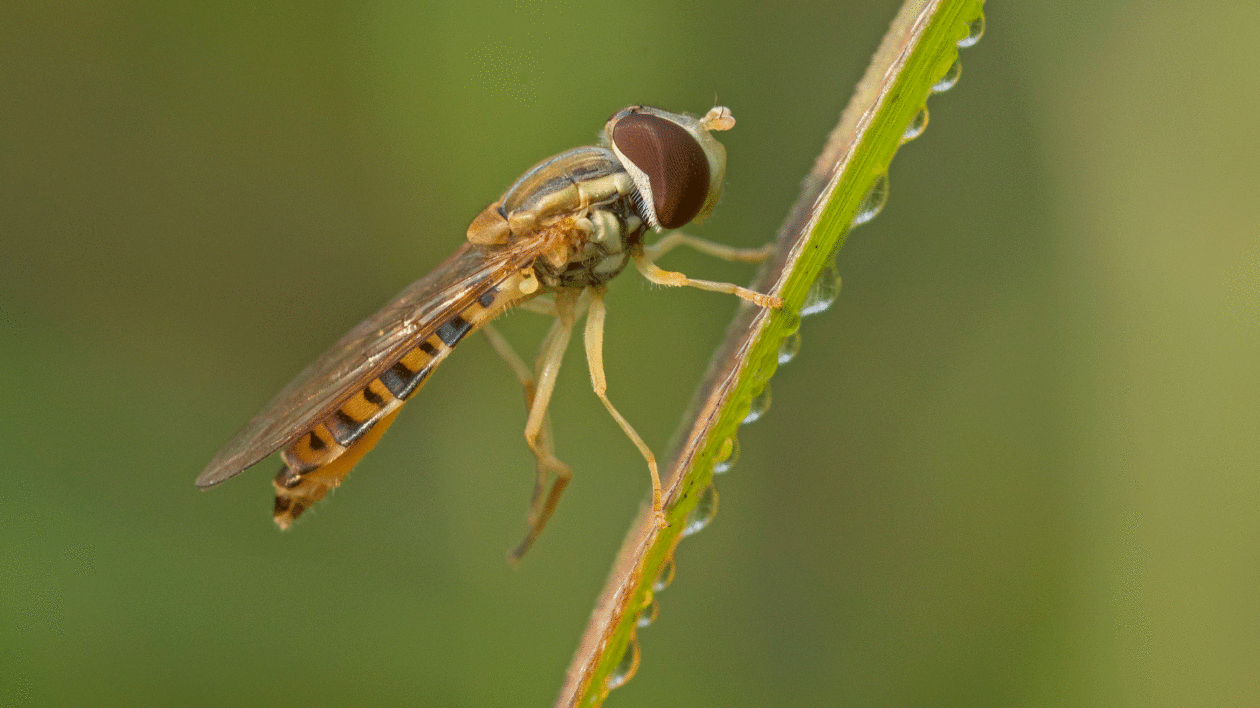
Despite the impressive diversity of organisms I found, this project was about much more than biological inventory. I found myself inspired to photograph tiny feathery anthers on the flowers of grasses, an exquisite network of veins in a backlit leaf, and gracefully drooping petals of flowers as they wilted.
Because I confined my exploration to such a limited geography, I looked at the prairie in new ways. Eschewing my typical photography approach of roaming broadly across prairies, looking for something of interest, I instead sat down and examined my plot inch by inch for appealing subject matter. I always found it. I hope others will find it among my photographs.
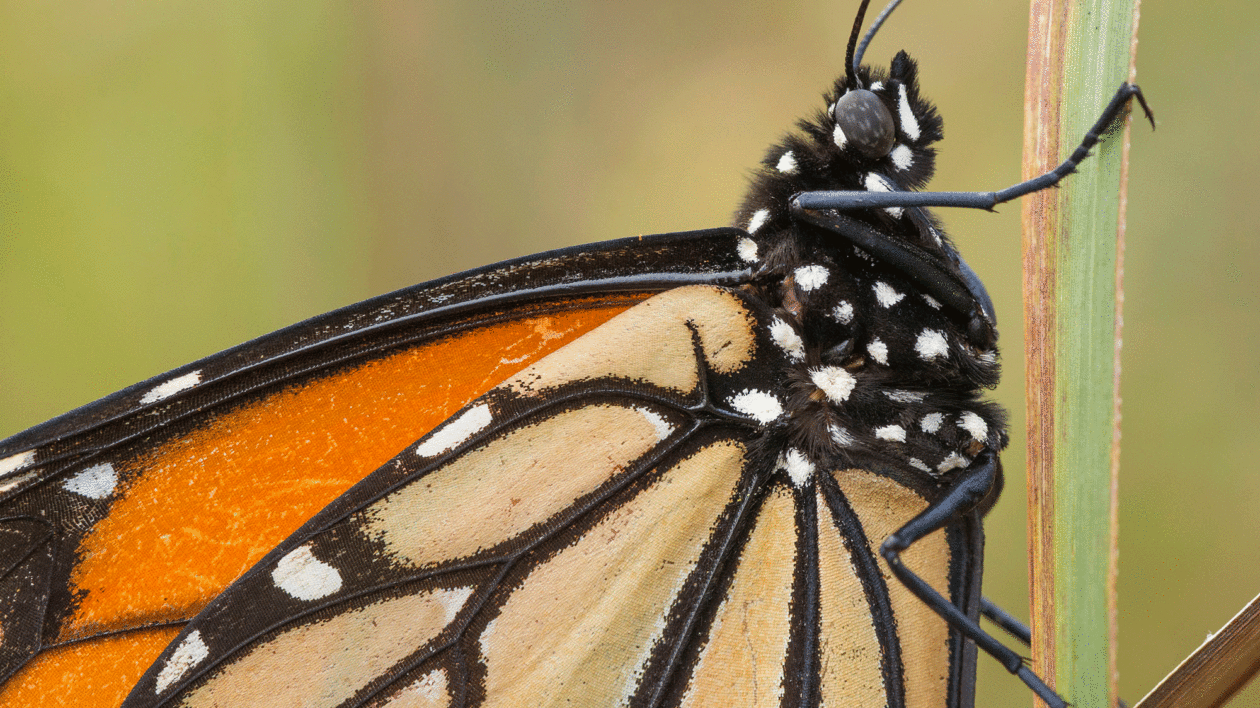
It would be great if thousands of people were sufficiently moved by my project to go explore the nearest prairie. It would be great, but I’m not counting on it. Instead, I’d be thrilled if people took a moment, looked through some of my photos, and thought to themselves, “huh, I had no idea there was so much going on in prairies!”
Just as it’s easier to empathize with people in far-off places after you’ve met a few of them, seeing some of what lives in prairies makes those prairies harder to dismiss as “boring grassy areas.” I love prairies and want to see them conserved. Showing others what I love is an important step in that process.
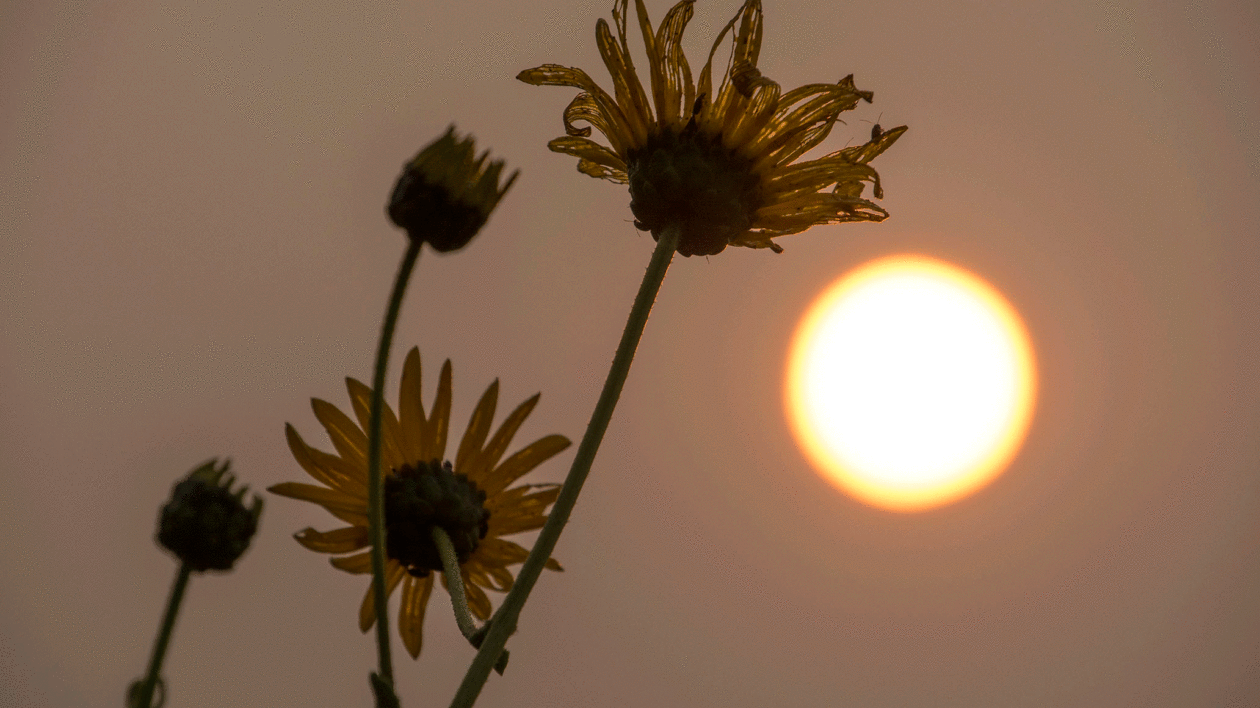
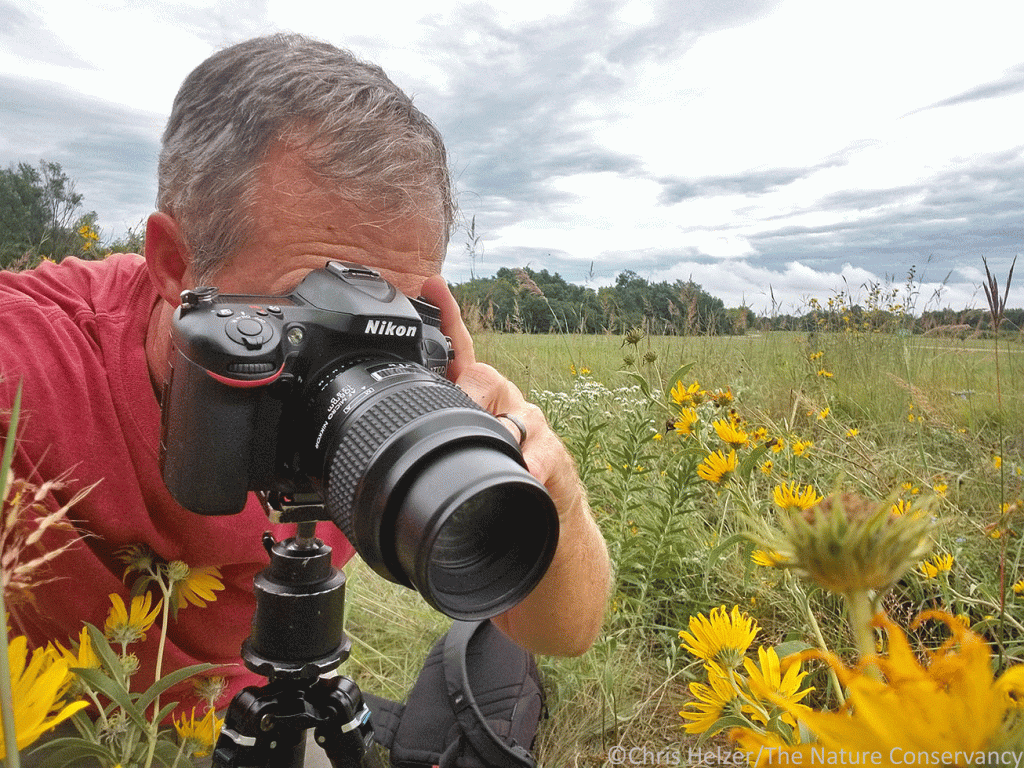



What a wonderful project/article. I am a member of the Native Prairie Assn. of Texas (NPAT). I was able to contribute substantially to help save a prairie remnant near Dallas last year. NPAT and articles like this are helping to inform people of the importance of biodiversity which is what prairies are all about.
I drove to CO through Iowa City, IA in 2014 and 2015, from MD. I was thrilled to see large fields of grasses and wildflowers near the hotel where I stayed and the restaurant where I ate. I was even more thrilled to see the birds in those beautiful fields ! On my second trip in 2015 I was stunned to see that several of the large fields had beenstripped of vegitation , into prepare for construction of large buildings ! I was heart-sick. Iowa City is a university town . I expected that the local government would have known the value of undisturbed land!!!!!!!
Prairies are home to a wide variety of species and provide food and cover to many more! We just need to ‘Stop and smell the flowers’, and enjoy whatever else may be visiting!
Wow, your photos are amazing, and your tenacious inspection of this small plot is inspirational. The world needs more nature heroes like you. I do a tiny version of this routinely in my outdoor adventures and in my yard with mostly natives plants, and have been stunned how “if you plant it they will come”. Most mind blowing was the year I started swamp milkweed from seed, had one lone plant, and came back from a trip to find a Monarch caterpillar munching away?
Thank you so much for your comments and pictures! As a gardener, with my nose at plant and bug level, I agree that you see fascinating things that would escape your notice if you were just walking by. It’s good for all of us to slow down. I live in Rochester, NY, and can’t wait to visit some real prairies when we do some road trips to the middle of our country.
I love your photos and the hopefulness I got reading about the carious species that passed through your plot. Very cool!
It is amazing the diversity that can be found in small spaces. Even in my small backyard I find it surprising.What’s more is the tenacity of these little creatures to survive despite living in an urban environment. I wish more people would take such pleasure in the natural world. Thank you for the wonderful photos!
Prairies are all over. Two states away is the Chicago Botanic Garden. They built a large area of prairie environments: xeric gravel upland, savanna, wetland, and lake. Iconic species like cardinal flower are identified by interpretive plaques. Served by commuter rail and a hiking trail, the gardens are not far from the Loop. More removed is Volo Bog (or fen), a remnant of the ice age. And downtown Chicago constructed small prairie areas in Millennium Park.
As a native of Nebraska, I have always loved the “boring, grassy areas!” Thanks for showing the rest of the world what wonders we can find if we just have eyes that see. Lovely photos!
I loved the article on all the interesting things you see in the prairie. I had no idea so much could go on in the prairie, and the photographs are amazing!!!!
What a joy to look at your photos and read about what you are doing. Living in Portland, Or. we don’t have prairies nearby but could certainly take up a similar experience in a forest. Maybe I’ll try soon. I’m inspired.
I totally applaud your effort. I must say we have done about the same thing, in a slightly different way, on our land in Kansas, and as we work the land and the vineyards. Insects, animals, birds, plants and flowers each with their food sources and and reproductive methods. The prairies are distinctive and offer up opportunities every time you are out in them. The various kinds of bees and various kinds of mice are all around us, if you look closely. We photograph with the iPhone, but document.
Very interesting! I’m so glad to read of the biodiversity that you witnessed and captured with your camera. I also am always astounded and delighted by all the various plants, insects, spiders, and “critters” that I see in my own backyard! Keep up the great work you are doing to share the variety and beauty of nature all around us, everywhere,everyday.
Very interesting!! And insightful!
Thank you. I do the same, but not with such good technique! Where can we see the others in the series?
Hi Elizabeth, you can see more about the project here: https://prairieecologist.com/square-meter-photography-project/. Or you can go to my Prairie Ecologist blog and search for square meter to see some of the posts I wrote on the topic during 2018.